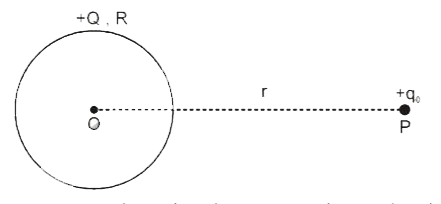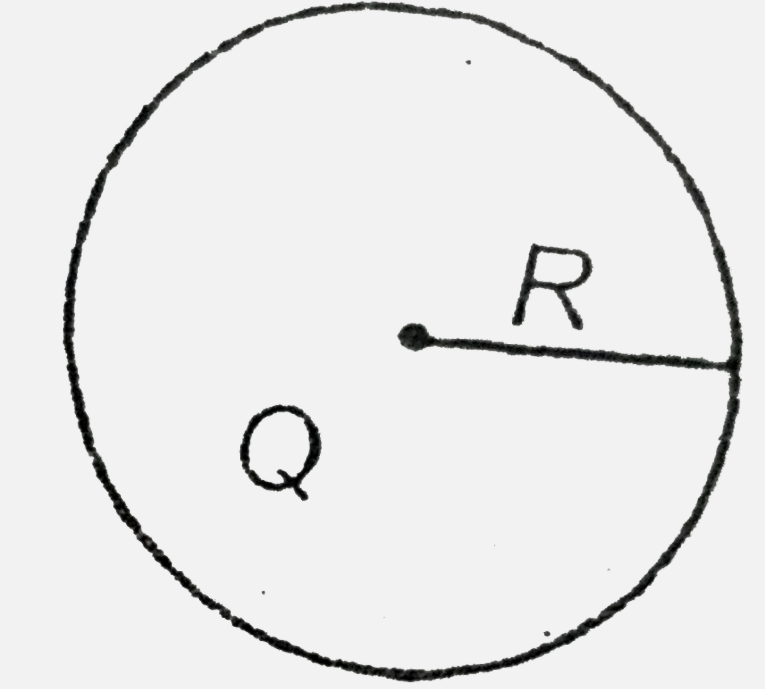Consider a spherical shell of radius R with a total charge +Q uniformly spread on its surface (center of the shell lies at the origin x= 0). Two point charge, +q and −q are brought, one after the other, from far away and placed at x=−a/2 and x=+a/2(a<R), respectively. Magnitude of the work done in this process is
(Q+q)2/4πε0a
zero
q2/4πε0a
Qq/4πε0a
The correct Answer is:C
Step by step video, text & image solution for Consider a spherical shell of radius R with a total charge +Q uniformly spread on its surface (center of the shell lies at the origin x= 0). Two point charge, +q and -q are brought, one after the other, from far away and placed at x = -a//2 and x = + a//2 (a lt R), respectively. Magnitude of the work done in this process is by Physics experts to help you in doubts & scoring excellent marks in Class 12 exams.
Topper's Solved these Questions
Similar Questions
Knowledge Check
- Question 1 - Select One
Consider a spherical shell of radius R wil a total charge +Q uniformly spread on its surface (centre of the shell lies at the origin x =0) Two point charge 1 and -q are brought, one after the other, from far away and placed at x=−1/2 and x=+a/2(a<R) respectively. Magnitude of the work done in this process is
A(Q+q)2/4πε0aBzeroCq2/4πε0aDQq/4πε0a - Question 2 - Select One
A spherical shell of radius R has a charge +q units. The electric field due to the shell at a point
Ainside is zero and varies as r−1 outside itBinside is constant and varies as r−2Cinside is zero and varies as r−2 outside itDinside is constant and varies as r−1 outside it - Question 3 - Select One
A thin spherical conducting shell of radius R has a charge q. Another charge Q is placed at the centre of the shell. The electrostatic potential at a point P a distance R2 from the centre of the shell is
A(a) 2Q4πε0RB(b) 2Q4πε0R−2q4πε0RC(c) 2Q4πε0R+q4πε0RD(d) (q+Q)24πε0R
A spherical shell having charge +Q (uniformly distributed) and placed as shown. Find the force between shell and the point charge (r>>R).
 View Solution
View SolutionThere is a hemispherical shell having charge Q uniformly distributed on its surface. Radius of the shell is R. Find electric potential and field at the centre (of the sphere).
View SolutionA thin spherical conducting shell of radius R has a charge q. Another charge Q is placed at the centre of the shell. The electrostatic potential at a point P a distance R2 from the centre of the shell is
View SolutionA spherical shell of radius R is given charge 3q on its surface and a point charge q is placed at distance R/2 from its centre C. Also there is a charge 2q placed outside the shell at a distance of 2R as shown. Then
 View Solution
View SolutionA non-conducting spherical shell of radius R surrounds a point charge q (q at center). The electric flux through a cap of the shell of half angle θ is:
View Solution

